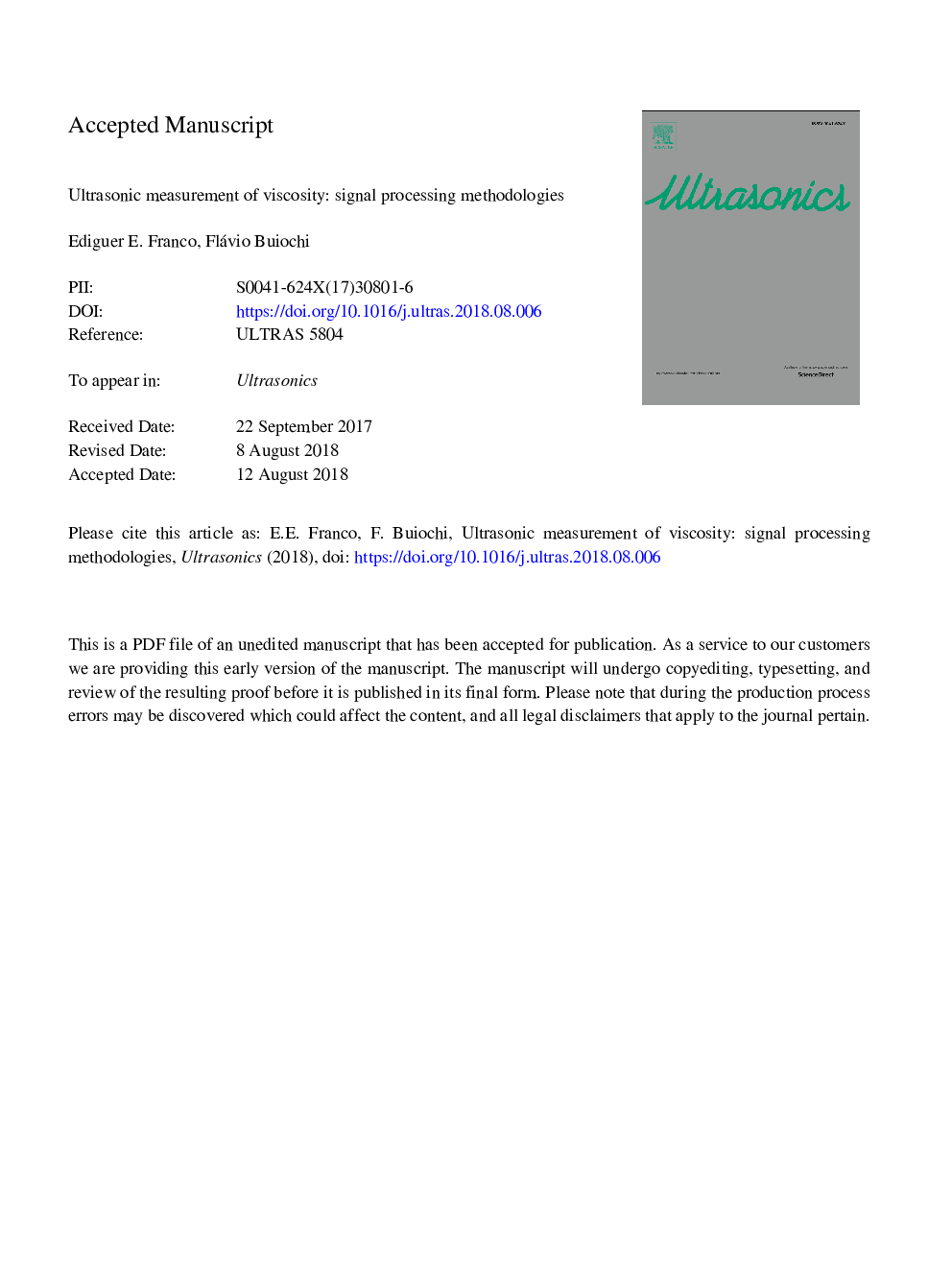| Article ID | Journal | Published Year | Pages | File Type |
|---|---|---|---|---|
| 9953734 | Ultrasonics | 2019 | 12 Pages |
Abstract
This work deals with two alternative methodologies for data post-processing resulting from the ultrasonic shear-wave reflectance method used for liquid viscosity measurement. In the shear-wave reflectance method, the measurement principle is the small transference of energy to the liquid when the wave strikes a solid-liquid interface, causing a detectable change in the reflection coefficient. A measurement cell that uses mode conversion for the generation of the shear waves was employed and samples of five different substances were tested, covering a viscosity range of three orders of magnitude. Ultrasonic results were compared to the values obtained by conventional viscometry. Despite the wide range of viscosity and the different nature of the liquids, Newtonian behavior was observed with all samples at the working frequencies. This can be concluded from the coincidence between the values obtained by ultrasound and by the rotational viscometer. However, the viscosity values show an oscillating behavior when calculated for different frequencies along the band of the transducer. This oscillating behavior induces big errors when the viscosity is calculated at a single frequency, forcing the development of alternative methodologies. Two methodologies that calculate the reflection coefficient in a frequency band instead of a single frequency were analyzed, showing more accuracy and precision.
Related Topics
Physical Sciences and Engineering
Physics and Astronomy
Acoustics and Ultrasonics
Authors
Ediguer E. Franco, Flávio Buiochi,
